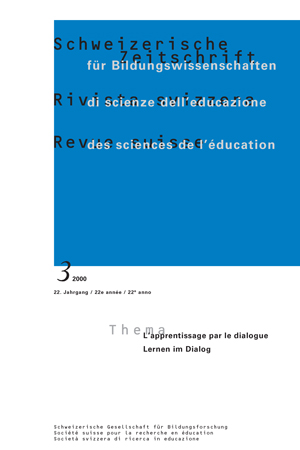Peer interaction in the teaching of mathematics: explanation and the coordination of knowledge
DOI:
https://doi.org/10.24452/sjer.22.3.4588Abstract
It has been argued that children’s performance in mathematics will be boosted by collaborative activities where they explain to peers how to solve problems. Empirical investigations have generally been supportive, although they identify dangers of separating the activity of problem solving from more strategic understanding of how problems should be approached. Background research has suggested that one route to avoiding the dangers might involve joint problem solving followed by a synthesis into teaching principles to be practised subsequently in dyadic tutorial sessions.
Downloads
Download data is not yet available.
Downloads
Published
2000-10-01
Issue
Section
Thematic contribution
License

This work is licensed under a Creative Commons Attribution 4.0 International License.
How to Cite
Davenport, P., Howe, C. and Noble, A. (2000) “Peer interaction in the teaching of mathematics: explanation and the coordination of knowledge”, Swiss Journal of Educational Research, 22(3), pp. 481–507. doi:10.24452/sjer.22.3.4588.



